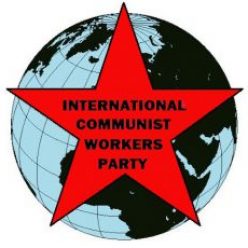
Leaflet from the Seattle general strike 1919, urging striking workers to follow the example of the workers in Russia in overthrowing the system
As 1920 began, US federal agents arrested thousands of communists and others in the “Palmer raids.” Immigrant communists were held for deportation. US citizens were turned over to state officials for political trials.
US Attorney-General A. Mitchell Palmer and his aide, J. Edgar Hoover, served under racist, imperialist President Woodrow Wilson, a Democrat. The raids soon ended but the xenophobia and anti-communism didn’t. We are still fighting their long-term effects.
The background was the massive strike wave of 1919. Seattle shipyard workers sparked a general strike. Garment workers in New York City, mainly immigrant women, struck for a shorter work week and won. Male cloakmakers and other needlework trades followed suit.
Telephone workers in Boston, mostly young women, led the shut-down of communications across New England. Public transit workers struck in Chicago and Nashville.
Over three hundred thousand steel workers, mostly eastern European immigrants, shut down the industry in September. Left-wingers, including future communists, gave key leadership. But in their syndicalist outlook, economic struggles were everything. They shunned politics – revolutionary or otherwise.
Wildcat coal strikes in the summer mushroomed into a national strike. Miners rebelled against union and government officials who called strikes illegal because the war was technically not over. Four hundred thousand miners walked out on November 1st.
The New York Times ranted about what it called “the foreign element… steeped in the doctrines of class struggle…ignorant and easily misled.” Immigrant workers proved their understanding by giving important leadership to their class.
Maj. Gen. Leonard Wood declared martial law in Gary, Indiana at the height of the steel strike. He justified military raids on labor radicals by claiming that “the influence of the Reds on workingmen is a real and a great danger to the United States right now.” It was dangerous to the US capitalist class!
But without a mass communist party, revolution was impossible.
Immigrant sections split from the reformist Socialist Party to form the Communist Party of America in September 1919. English-speaking left-wingers also split to form the Communist Labor Party. In May 1921, pushed by the Communist International, these merged.
The new Communist Party suffered from factionalism, syndicalist politics and isolation from the masses. Its efforts to fight the racism rampant among white workers were “too little, too late.” Worse, the Communist International steered it away from underground organizing and into electoral politics.
These weaknesses made revolution seem remote for the young US communist movement.
But the US capitalists intended to stamp out any sparks of Bolshevism. Since 1917 they had relentlessly attacked the IWW (Industrial Workers of the World) with beatings, jailings and murders. These peaked when the IWW defended its hall in Centralia, WA from an attack led by local businessmen and the new American Legion in November 1919.
By then the once-influential IWW was rapidly becoming irrelevant. A stronghold of syndicalism, it refused to join the new Soviet-led Communist International. Some of its best leaders left to join the Communist Party.
November 7-8, 1919, marked the second anniversary of the Bolshevik revolution. That night, US Attorney General A. Mitchell Palmer, coordinating with local police, raided homes and offices of labor radicals across the US. A prime target was the Union of Russian Workers.
Two hundred fifty immigrants were deported to Russia on December 21. With them were two famous anarchists, Emma Goldman and Alexander Berkman. The January 1920 Palmer Raids followed. These were soon condemned even by federal courts.
But xenophobia and anti-communism were baked into 20th-century US culture.
White women won the vote in 1920, supported by racists who hoped they would counter the votes of immigrant men. Political prisoners, including pacifists, stayed in jail. The US Army began an anti-communist training program. Immigration was increasingly restricted. The 1924 National Origins Act imposed racist quotas.
Loyalty oaths, textbook censorship and “Christianization” campaigns became common. Anti-communist labor union leaders pledged loyalty to capitalism. Comprehensive high schools aimed to “Americanize” immigrant children.
Sadly, Goldman and other anarchists contributed to the anti-communist crusade with attacks on the Soviet Union. The communists who led the Soviet Union were wrong about many things. But the anarchist critiques – then and now—came from the right.
Today, we generally get a great response to Red Flag from workers and youth at job sites and mass demonstrations. But we still must confront the xenophobia and anti-communism that have been part of the mass culture here for over a century.
We need to confront anti-communism directly, whatever its form. We need to expose it as an attack on the international working class.
By sharpening this struggle, we can resolve contradictions and build a bigger, stronger International Communist Workers’ Party.

